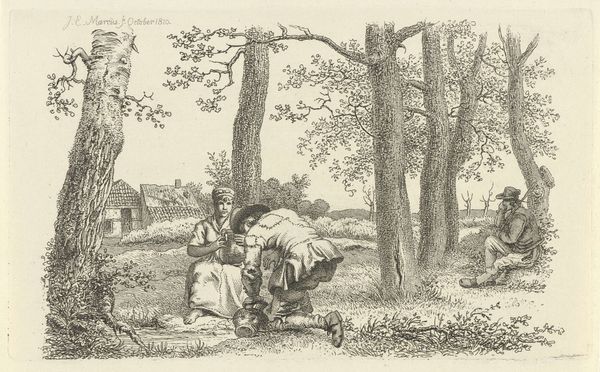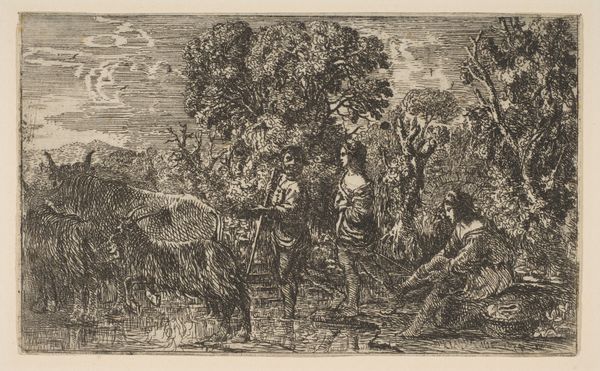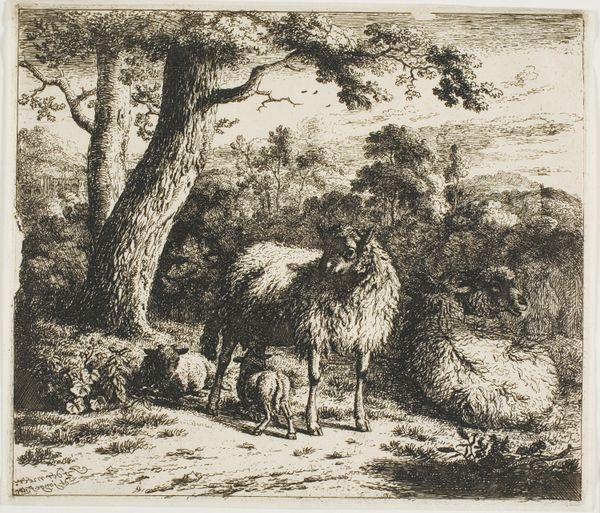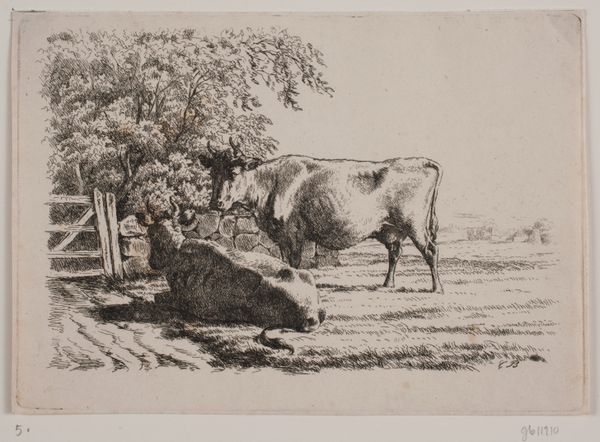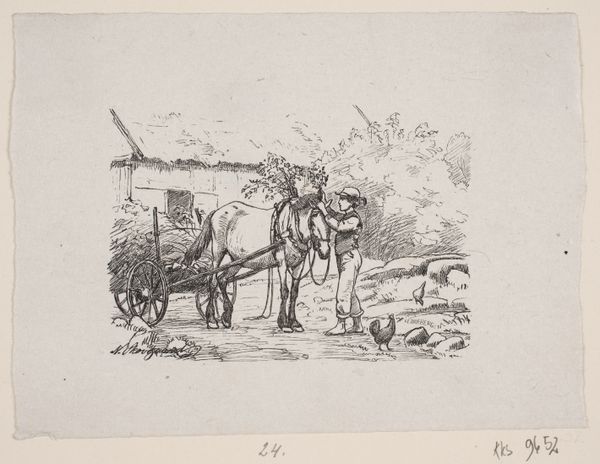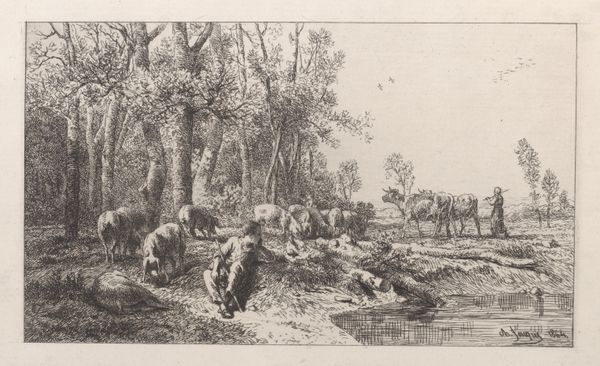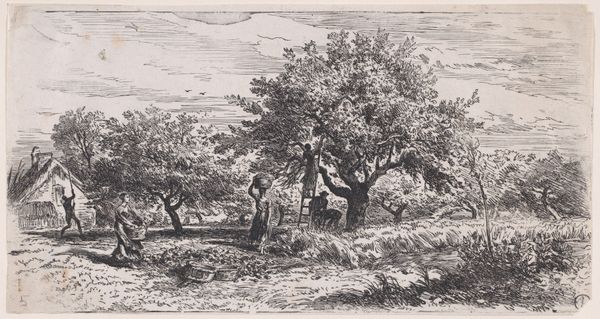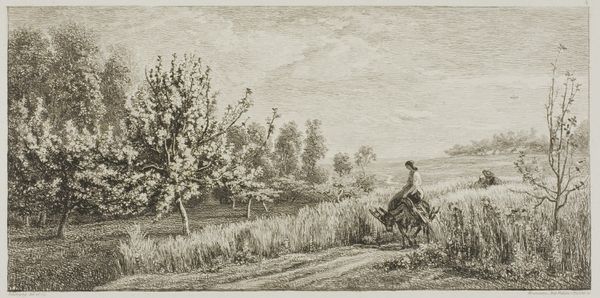
print, etching
# print
#
etching
#
landscape
#
charcoal drawing
#
pencil drawing
#
genre-painting
#
realism
Dimensions: 154 mm (height) x 230 mm (width) (billedmaal)
Editor: So, this etching, "Høstlandskab" – Autumn Landscape – made sometime between 1870 and 1881, caught my eye at the SMK. It has a timeless quality... the composition feels balanced and serene. What do you see in this piece, from your perspective? Curator: The landscape speaks to cycles, doesn't it? The harvest is a potent symbol of completion, of reaping what was sown. Notice the way the haystacks are rendered – almost like pyramids or ziggurats, echoes of ancient civilizations storing grain against leaner times. What do they evoke for you? Editor: That's a great observation! I hadn’t considered those historical echoes. To me, they initially felt like a comfortable part of a rural scene, reinforcing a sense of groundedness. The people are small, almost lost in the landscape... Curator: Precisely! That echoes a very old trope doesn’t it? Humanity within, yet diminished by, the scale of nature’s power. This tension plays out throughout art history - humanity's dance with the natural world. Consider the use of line: dense and tangled in the hay, light and airy in the sky. Editor: It almost feels as though the land dictates the activity, if that makes sense. Are there specific traditions this invokes, like folk tales? Curator: Yes, you are absolutely right! Harvesting, feasting, burial and honoring the dead, the painting is a celebration of the cyclical return in line with folk celebrations, echoing traditions celebrating the harvest that were present even then. What would you call these, metaphorically, in art traditions? Editor: A constant thread—cultural memory and continuity in practice. Thinking of that thread… this artwork seems to quietly whisper that, as do so many great works, a powerful observation to end on. Curator: I couldn’t agree more; the layers of symbolism speak volumes if you know how to listen, like whispers across generations.
Comments
No comments
Be the first to comment and join the conversation on the ultimate creative platform.




